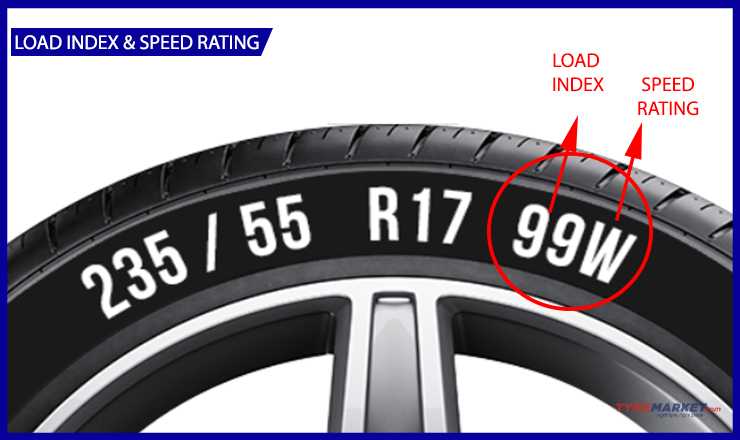
The tyre load index is otherwise known as tyre hire load index, tyre load rating or load capacity index. The maximum capacity of load that can be carried by a tyre is identified by this capacity. This is also called the absolute carrying capacity of tyres Sturminster Newton.
The Maximum Load Capacity
Knowing the quantity of weight that can be carried by the tyres before going on a trip with your car packed is crucial. Your tyre is not meant for carrying loads of any size you put on it. That is the reason you must never exceed the load limit of your tyre. The exact load capacity of your tyre can’t be assumed. The maximum possible tyre load is indicated by the figure. You can have a glance at the tyre sidewall or the registration number of your vehicle, to calculate the load that can be carried by your car or the rims. The labelling can be found there.
The tyres’ load capacity is indicated by the two- to the three-digit number found in the penultimate position. However, calculating the tyre load rating is easier by using the load index tables offered by many tyre sites. For the respective load rating, the maximum load for your tyres can be found out in terms of kilograms. The 87 in the penultimate position is relevant for a tyre code with the digits 195/55 R16 87 V: a tyre load rating of 87is represented by this i.e. 545 kilograms of load capacity.
Never Exceed Beyond The Tyres’ Maximum Load Capacity
You must not go beyond the limit of your tyre’s load capacity as this is a legal need. In addition, the risk of tyre damage is also avoided. The relative indication of the load capacity is affected by the air pressure in your tyres and your car speed. More pressure is exerted on the tyre by driving with a heavy load and driving at an accelerated speed. The tyre gets stressed extensively. The tyre gets damaged or deteriorated if the load exceeds the limit. Other aspects like the lifespan of the tyre also come into play here. But, you must remember one thing: The defects caused in the tyres as a result of excess load can be prevented by maintaining the load on your car within the load capacity limit.
When it is a matter of the load capacity of the tyre, the air pressure in the tyre is essential. As you decrease the air pressure in the tyre, your car’s load capacity also decreases. When you increase the tyre’s air pressure, the load capacity of the car also increases. However, you must not exceed the suggested guide value as this will result in a change in driving pattern. By principle, an increase in air pressure by 0.1 bars will result in an increase in the load index of the tyre by one unit.
Calculator For Tyres’ Load Capacity
The surest and easiest way of calculating the tyre’s load index is referring to the load index table. However, if the permissible rating weight is already known, finding out the next highest values is possible without a table.
The Tyre Load Index Of Winter Vs. Summer Tyres
You won’t necessarily find a deviation between a winter tyre and a summer tyre load index. However, a different load capacity index is present in the tyre if the tread diameter or depth differs. The tyres face more tough weather challenges in winter as compared to the summer. Braking distance increases and driving gets tougher whether you are driving on ice or snow.
Using A Tyre With Higher Load Index
Your car must not be at risk by using a load rating exceeding the recommended one. However, tyres lacking the suggested load index must not be used in your car. In the UK, driving with tyres having a low rating is risky and punishable by the Law.
Riding Quality And The Load Index Of A Tyre
The riding quality and the load index of the Goodyear Tyres Sturminster Newton are not correlated directly. Stiffer ride, higher PSIs and taller sidewalls indicate major load index increase often. Riding quality is rather affected more by the inflation level, tread depth and suspension condition.







